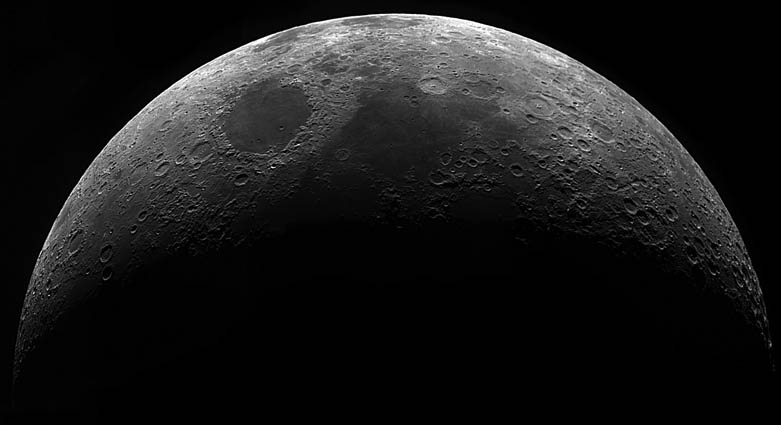Difference between revisions of "February 24, 2005"
| Line 12: | Line 12: | ||
</table> | </table> | ||
<table width="80%" border="0" align="center" cellpadding="8"> | <table width="80%" border="0" align="center" cellpadding="8"> | ||
| − | <tr><td><div align="center" class="main_sm">Image Credit: [mailto:mariosantiago@sapo.pt Mario Santiago]</p> | + | <tr><td><div align="center" class="main_sm"><p>Image Credit: [mailto:mariosantiago@sapo.pt Mario Santiago]</p> |
</div></td> | </div></td> | ||
</tr> | </tr> | ||
| Line 21: | Line 21: | ||
<p align="left">The problem with lunar observing is that it is a night-time obsession - I mean, activity. But sometimes it is cloudy at night, or I’m tired then, or a feature I want to see is near the terminator hours earlier. This LPOD demonstrates that daylight is not an obstacle to excellent lunar imaging. The four image mosaic was taken by Mario in Portugal during late afternoon (5:30-5:43 pm local time) using a normal 8” telescope and a H-Alpha filter to increase the Moon’s contrast against the background sky. The image has had its contrast, gamma, and brightness enhanced, which also darkened the sky. The resolution of this broad field mosaic is excellent (and better still in the larger original view) – now someone should experiment with high resolution detailed imaging of individual features. Oh yes, another benefit of daytime imaging is that it can be done with a class during normal school hours!</p> | <p align="left">The problem with lunar observing is that it is a night-time obsession - I mean, activity. But sometimes it is cloudy at night, or I’m tired then, or a feature I want to see is near the terminator hours earlier. This LPOD demonstrates that daylight is not an obstacle to excellent lunar imaging. The four image mosaic was taken by Mario in Portugal during late afternoon (5:30-5:43 pm local time) using a normal 8” telescope and a H-Alpha filter to increase the Moon’s contrast against the background sky. The image has had its contrast, gamma, and brightness enhanced, which also darkened the sky. The resolution of this broad field mosaic is excellent (and better still in the larger original view) – now someone should experiment with high resolution detailed imaging of individual features. Oh yes, another benefit of daytime imaging is that it can be done with a class during normal school hours!</p> | ||
<blockquote> | <blockquote> | ||
| − | <p align="right">— [mailto:tychocrater@yahoo.com Chuck Wood]</blockquote> | + | <p align="right">— [mailto:tychocrater@yahoo.com Chuck Wood]</p></blockquote> |
<p align="left"><b>Technical Details:</b><br> | <p align="left"><b>Technical Details:</b><br> | ||
Feb 13, 2005. Newton Orion SkyView Pro 8' and Atik 2HS ccd. Readers with good short term memory may remember Mario’s previous [[February_17,_2005|LPOD]] of this area, which was taken 30-60 minutes later on the same day. | Feb 13, 2005. Newton Orion SkyView Pro 8' and Atik 2HS ccd. Readers with good short term memory may remember Mario’s previous [[February_17,_2005|LPOD]] of this area, which was taken 30-60 minutes later on the same day. | ||
| Line 27: | Line 27: | ||
<p><b>Related Links:</b><br> | <p><b>Related Links:</b><br> | ||
[[October_27,_2004|The Moon by Day]] | [[October_27,_2004|The Moon by Day]] | ||
| + | </p> | ||
<p align="left"><b>Tomorrow's LPOD: </b> Did A River Run Through It?</p> | <p align="left"><b>Tomorrow's LPOD: </b> Did A River Run Through It?</p> | ||
</tr> | </tr> | ||
Revision as of 21:16, 17 January 2015
Double Your Pleasure
Image Credit: Mario Santiago |
|
Double Your Pleasure The problem with lunar observing is that it is a night-time obsession - I mean, activity. But sometimes it is cloudy at night, or I’m tired then, or a feature I want to see is near the terminator hours earlier. This LPOD demonstrates that daylight is not an obstacle to excellent lunar imaging. The four image mosaic was taken by Mario in Portugal during late afternoon (5:30-5:43 pm local time) using a normal 8” telescope and a H-Alpha filter to increase the Moon’s contrast against the background sky. The image has had its contrast, gamma, and brightness enhanced, which also darkened the sky. The resolution of this broad field mosaic is excellent (and better still in the larger original view) – now someone should experiment with high resolution detailed imaging of individual features. Oh yes, another benefit of daytime imaging is that it can be done with a class during normal school hours! Technical Details: Related Links: Tomorrow's LPOD: Did A River Run Through It? |
|
Author & Editor: Technical Consultant: Contact Translator: A service of: |
COMMENTS?
Register, and click on the Discussion tab at the top of the page.




